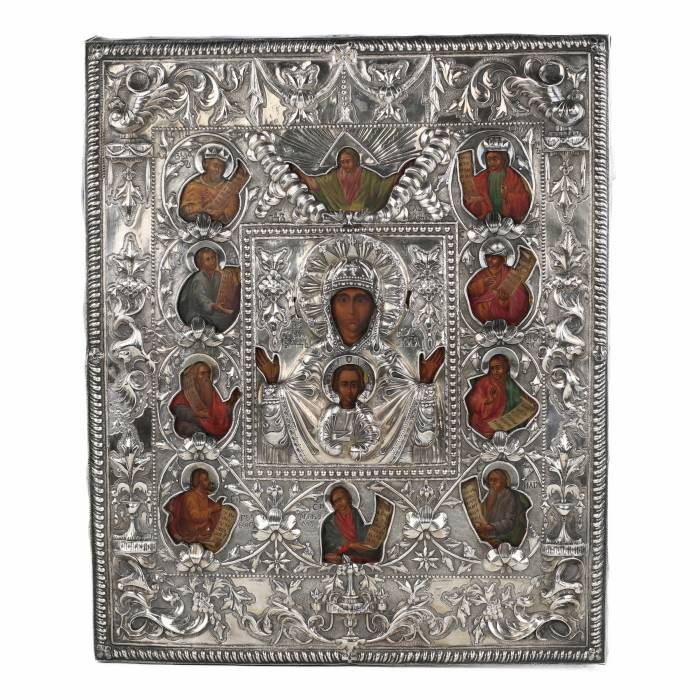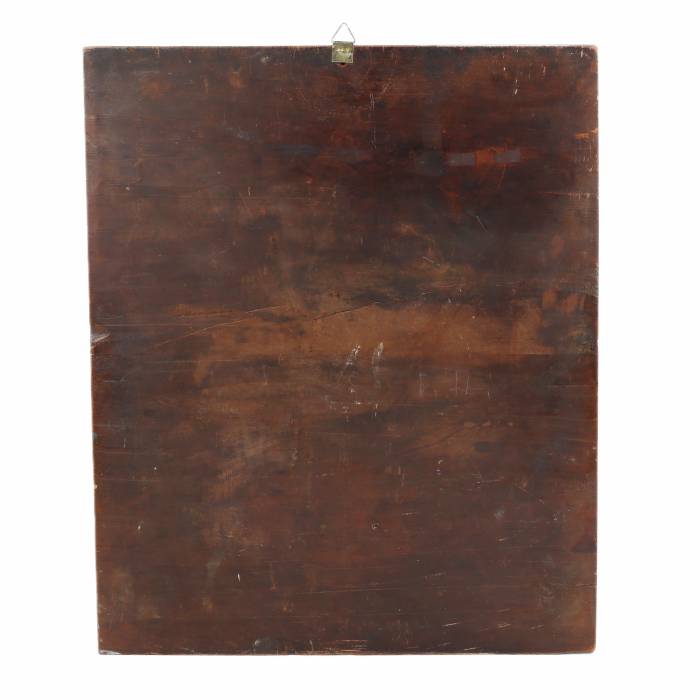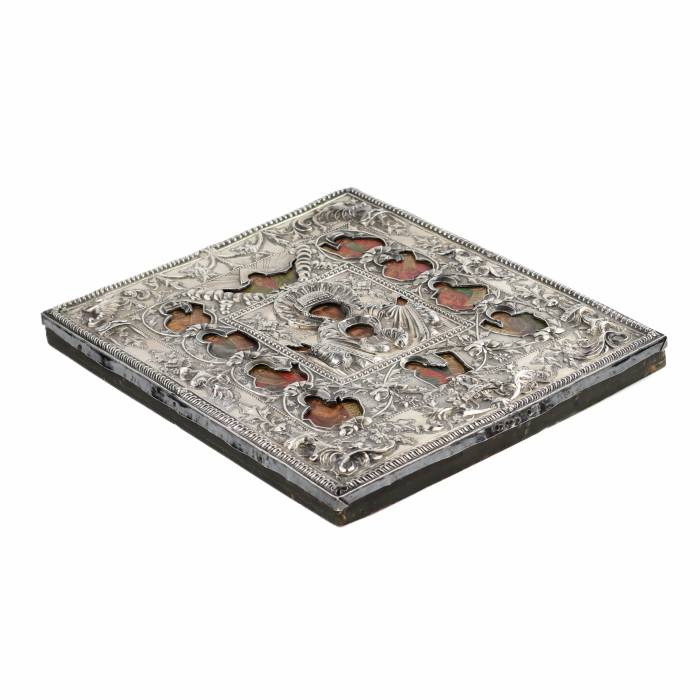
AntiqonART consultant will contact you within one business day after receiving your request.
Thank you for your request!
Our consultant will contact you soon.

AntiqonART consultant will contact you within one business day after receiving your request.











Historical information: Klishin Adrian Ioakimov was born in 1768 in Vologda and died in 1833 in Moscow. His father, Ioakim Klishin, was a famous silversmith who created church utensils and icon frames. Andrian Klishin continued the family craft from 1794 to 1828, personally fulfilling orders for church items. In 1804, he was invited to the Kirillo-Belozersky Monastery to create a canopy over the shrine of St. Kirill. The canopy was decorated with chased brands and garlands, demonstrating the master`s skill. The works created by the master are stored in the largest museums of Russia and are an important historical and cultural heritage.
Kursk Root Icon of the Mother of God Sign - The Kursk Icon of the Mother of God Sign is the most revered icon of the Russian Orthodox Church Abroad. The icon of the Mother of God with the Child, surrounded by images of the Lord of Sabaoth and the Old Testament prophets, is revered as miraculous, belongs to the Oranta (Sign) iconographic type. The original is located in the Synodal Cathedral of the Sign of the Russian Orthodox Church Abroad in New York, USA. The special help of the Mother of God through this icon is associated with important events in the history of Russia: the liberation war of the Russian people during the Polish-Lithuanian invasion of 1612 and the Patriotic War of 1812. The miraculous icon of the Mother of God The Sign of Kursk-Root was on Russian soil for the last time on September 14, 1920 in Crimea, in the troops fighting against the Bolsheviks. Having left Russia in 1920, the holy icon became the Hodegetria (Guide) of the Russian Diaspora, constantly staying with all the first hierarchs of the Russian Orthodox Church Abroad.Отправить отзывБоковые панелиИсторияСохраненные








